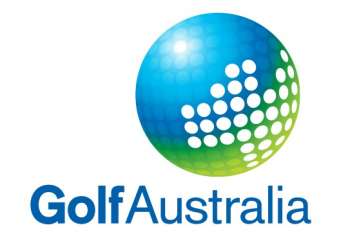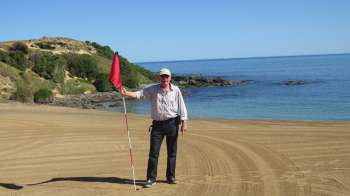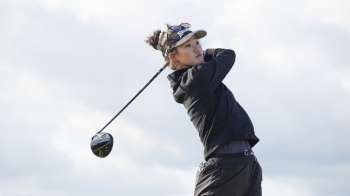Baby steps toward modernisation, Golf Australia elects two new board members.
By: Darius Oliver
On Monday night our governing body elected two new Board members; Sarah Chia from Royal Adelaide and Richard Allen from Royal Melbourne. Though the election of two new privileged, top-tier private club directors will shock few, unlike the other seven members of the Golf Australia Board, neither Allen nor Chia is over the age of 60. Chia is, in fact, under 40 and a full 25 years younger than the previous youngest Board member.
While few would dare question the passion and commitment of individual members of the GA Board and the appointment of Chia, in particular, is an encouraging sign, it seems fair to wonder aloud whether the game of golf in Australia is headed in the right direction or whether something is still seriously amiss.
Lets consider a few key facts here. Firstly, even with the new appointments the average age of the Golf Australia Board is 63. By comparison, the average age of AFL Commissioners and Netball Australia directors is 53. Tennis Australia and Cricket Australia also have significantly younger boards than golf, and more than half of their directors are under the age of 60. Even Bowls Australia has four members (out of 8) under 60. Until Monday night, Golf Australia had zero. Prior to Chia’s appointment, the youngest Board member at Golf Australia would have been the eldest at Netball Australia, which has only one director over 60.
The contrast between governing bodies in Australia is stark, and the problems with golf are many and varied. Golf Australia’s own mission statement talks of their responsibility to ‘grow the game’, yet membership has fallen nationwide every SINGLE year since 1999. There is a strong argument that of all the major sports here, ours is the most desperately in need of innovation and energy. If anything, we should have the younger, more progressive, board. One can only hope that Monday’s appointments signal a concrete deviation from the disastrous ‘business as usual’ type approach of the last decade.
As we all know, the challenges facing golf from a changing demographic and more competitive recreation market are significant. Despite the continual fall in membership numbers, Golf Australia remains optimistic about the health of our game, in part because of their belief that elite performance drives participation. The problem with an ‘Australian Golf is driven by elite performance’ mantra is the fundamental disconnect between what drives young people to play a sport, and the access these kids currently have to world class golf, either in person or on television. With barely a whimper from the governing body, we have lost three men’s Major Championships from our free-to-air screens. Less than 30% of Australian sports fans can now view these important events.
Equally, the local PGA tour is a shadow of its former self. By contrast to today’s niche media landscape, during the 1980s golf was a legitimate, mainstream professional sport. Greg Norman energised the game across Australia and introduced golf (in person) to many of the Gen X’s who still play today. Incredibly, the Great White Shark won 20 times on Australian soil between 1983 and 1989. Beyond the Australian Open, Masters and PGA Championships were wins in events like the NSW Open (3 times), Queensland Open (twice), Victorian Open, Western Australian Open, South Australian Open and the now defunct Palm Meadows Cup and Australian TPC.
While Adam Scott and others support the local tour as best they can, they don’t play anywhere near as often nor are their appearances as well spread. The parking of our national open in Sydney and the loss of decent local events/fields elsewhere does nothing but diminish the impact that champion golfers can have on participation.
Unlike the 1980s, the truth is that golf here is no longer driven by elite performance. When Adam Scott won our first Masters in 2013, for example, membership numbers in Australia dropped. The same thing happened in 2015 and 2016, despite another major championship to Jason Day and the rise of both Scott and Day to the World # 1 ranking. It could be argued that elite Australian golf has never been healthier than over the last decade, yet member numbers keep falling and the majority of our golf clubs are now under financial stress, or worse.
The appointment of Sarah Chia to the GA Board is particularly welcome given her age, talents as a skilled legal negotiator and the fact that female membership has fallen below 20% of total numbers for the first time in many years. Last year more girls played Milo Cricket than the total number of kids (boys and girls) who participated in the MyGolf program. Golf trails Tennis, AFL, Rugby, Netball and Cricket badly in the area of youth participation. Chia represents an important demographic, and if all she does is encourage further regeneration of an ageing, blue-blooded board then her appointment will have been a success.
As our (Gen X) representative at Golf Australia, we need Chia to focus on accountability and corporate governance, and to ask administrators what they are doing to halt declining memberships, to encourage a modern, digital generation into the game and to prevent more mergers, relocations and course closures. We need to know now, before it’s too late, whether programs at Golf Australia are working and whether staff are competent and effective – and if not, why not?
Perhaps I’m wrong, but it seems time for Golf Australia to acknowledge that their primary purpose is no longer on developing elite talent. Their primary focus must be on halting the decline in memberships and, eventually, to increasing participation. Jordan Spieth playing in Sydney again this year is great, but it won’t solve problems at the Rossdale Golf Club in Melbourne or the Pacific Golf Club in Brisbane. Introducing new golfers to the charms and beauty of our ancient game is the only answer. Learning and then playing golf is surely a more effective growth strategy, than expecting a ‘blink-and-you-miss-it’ summer schedule to provide non-golfers with some sort of vicarious inspiration.
Beyond lobbying the R&A and the USGA for free-to-air access to their championships for club golfers, my plea to Golf Australia is to celebrate elite golf but not obsess over the performance or development of such players and such events. The public courses of Australia and our second, third and fourth tier private clubs will take a hundred new 20 handicappers over a dozen new Jason Day’s – every single day of the week.
Back to NewsMore News
Who Really Designed Cape Wickham Links?
AGD ranks Cape Wickham #1 in Australia & interviews Duncan Andrews to get full story on course design
Landmark professional golf tournament coming to Auckland
Pro golf will make a major return to NZ's largest city next March with event hosted by Royal Auckland & Grange
Grace Kim confirmed for 2026 women's Australian Open
Australian star will headline the Women’s Open when it returns to Kooyonga Golf Course in March
AGF releases 2024/25 Impact Report, highlighting life-changing opportunities for young Australians
The Australian Golf Foundation Report reveals a year of progress in making golf more accessible, inclusive, and life-changing for young people




